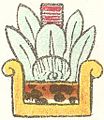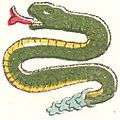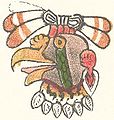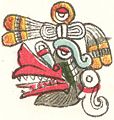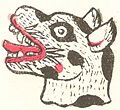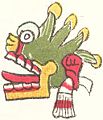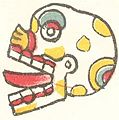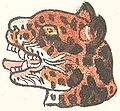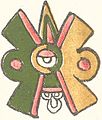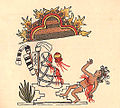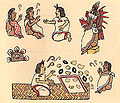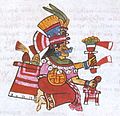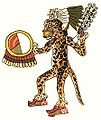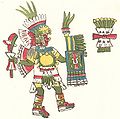- Codex Magliabechiano
-
The Codex Magliabechiano is a pictorial Aztec codex created during the mid-16th century, in the early Spanish colonial period. It is representative of a set of codices known collectively as the Magliabechiano Group. Others in the group include the Codex Tudela and the Codex Ixtlilxochitl.
The Codex Magliabechiano is primarily a religious document. Its 92 pages are almost a glossary of cosmological and religious elements. They depict in turn the 20 day-names of the tonalpohualli the 18 monthly feasts, and the 52-year cycle. They also show various deities, indigenous religious rites, costumes, and cosmological beliefs.
Contents
History
The Codex Magliabechiano is based on an earlier unknown codex, which is assumed to have been the prototype for the Magliabechiano Group. It is named after Antonio Magliabechi, a 17th century Italian manuscript collector, and is presently held in the Biblioteca Nazionale Centrale, Florence, Italy.
It was created on European paper, with drawings and Spanish language text on both sides of each page. Some of the images are included below.
Images
SVG renderings
Full pages of icons
Icons
Other images
References
-
- Boone, Elizabeth Hill (1983). The Codex Magliabechiano and the Lost Prototype of the Magliabechiano Group (issued together with reprint of The Book of the Life of the Ancient Mexicans by Zelia Nuttall [1903], part 2 in two-volume set ed.). Berkeley: University of California Press. ISBN 0-520-04520-3. OCLC 8113016.
Further reading
- Carrasco, David. (2001). The Oxford Encyclopedia of Mesoamerican Cultures: The Civilizations of Mexico and Central America. Oxford. ISBN 0195108159.
External Links
Complete color facsimiles of the hand-painted manuscript in the National Central Library in Florence
- Codex Magliabechiano (Graz, 1970)
- Codex Magliabecchiano (Rome, 1904)
- Codex Magliabecchiano (russian) (Kiev, 2011)
Categories:- Aztec codices
- Mesoamerica stubs
Wikimedia Foundation. 2010.










